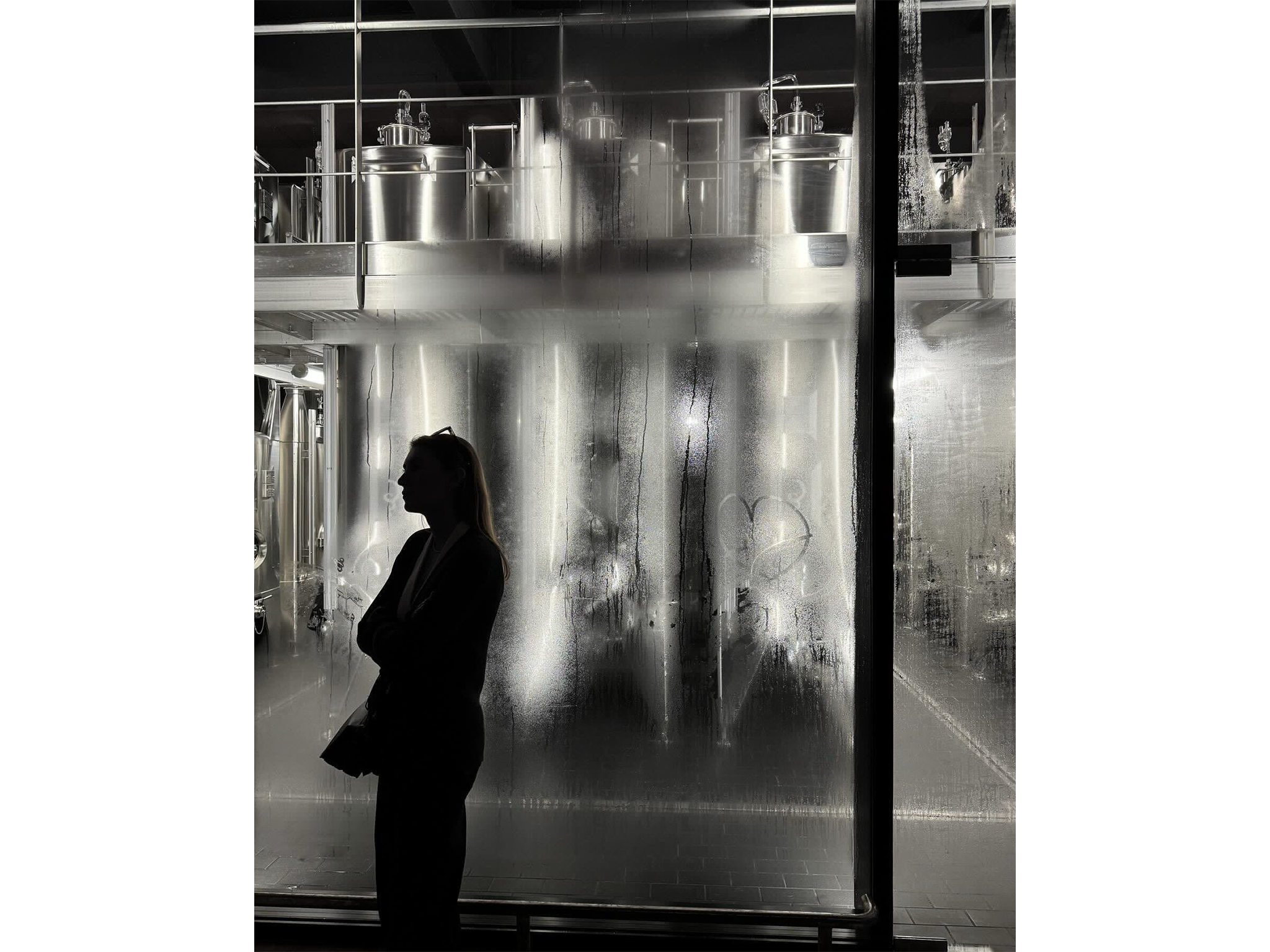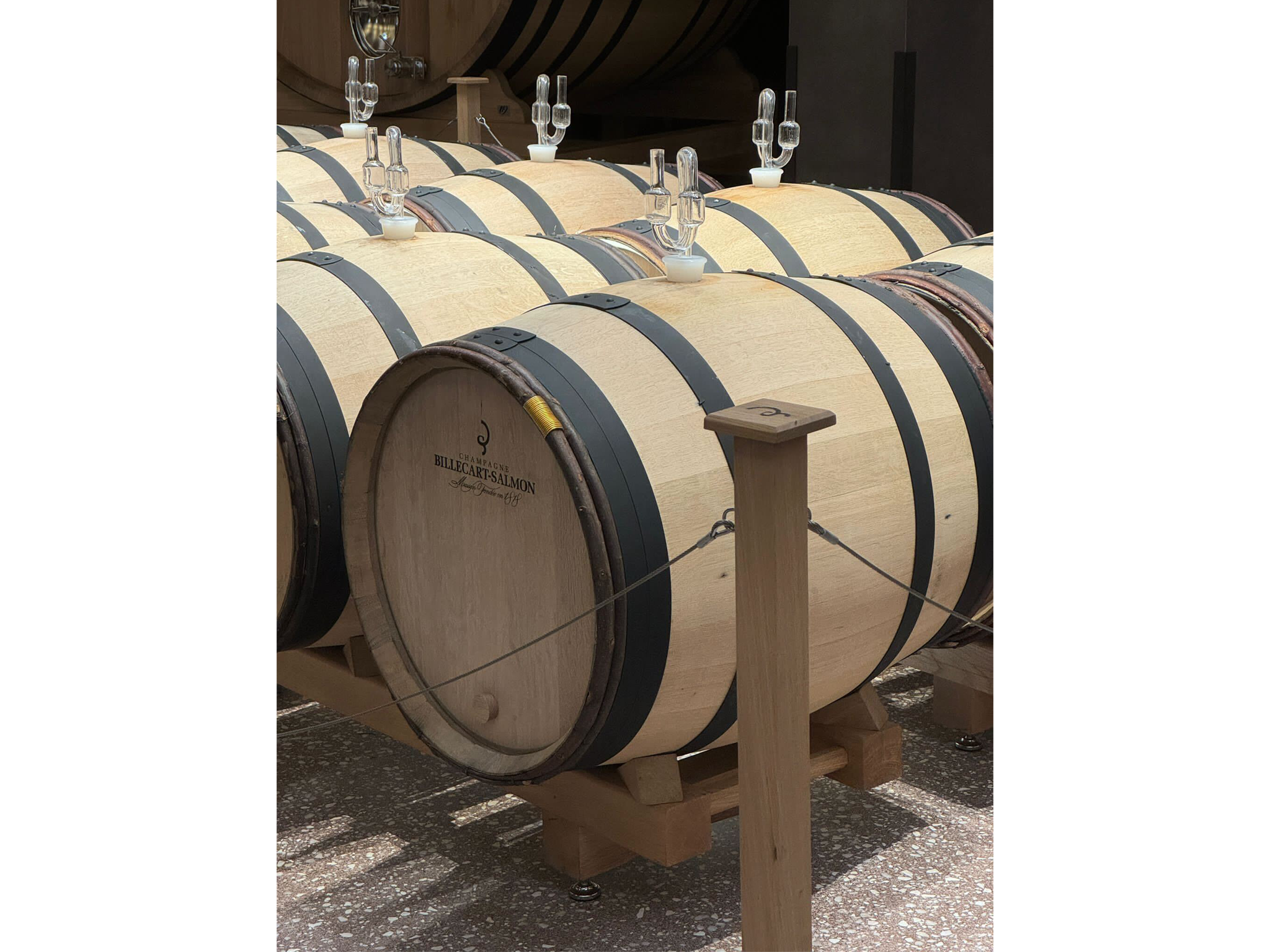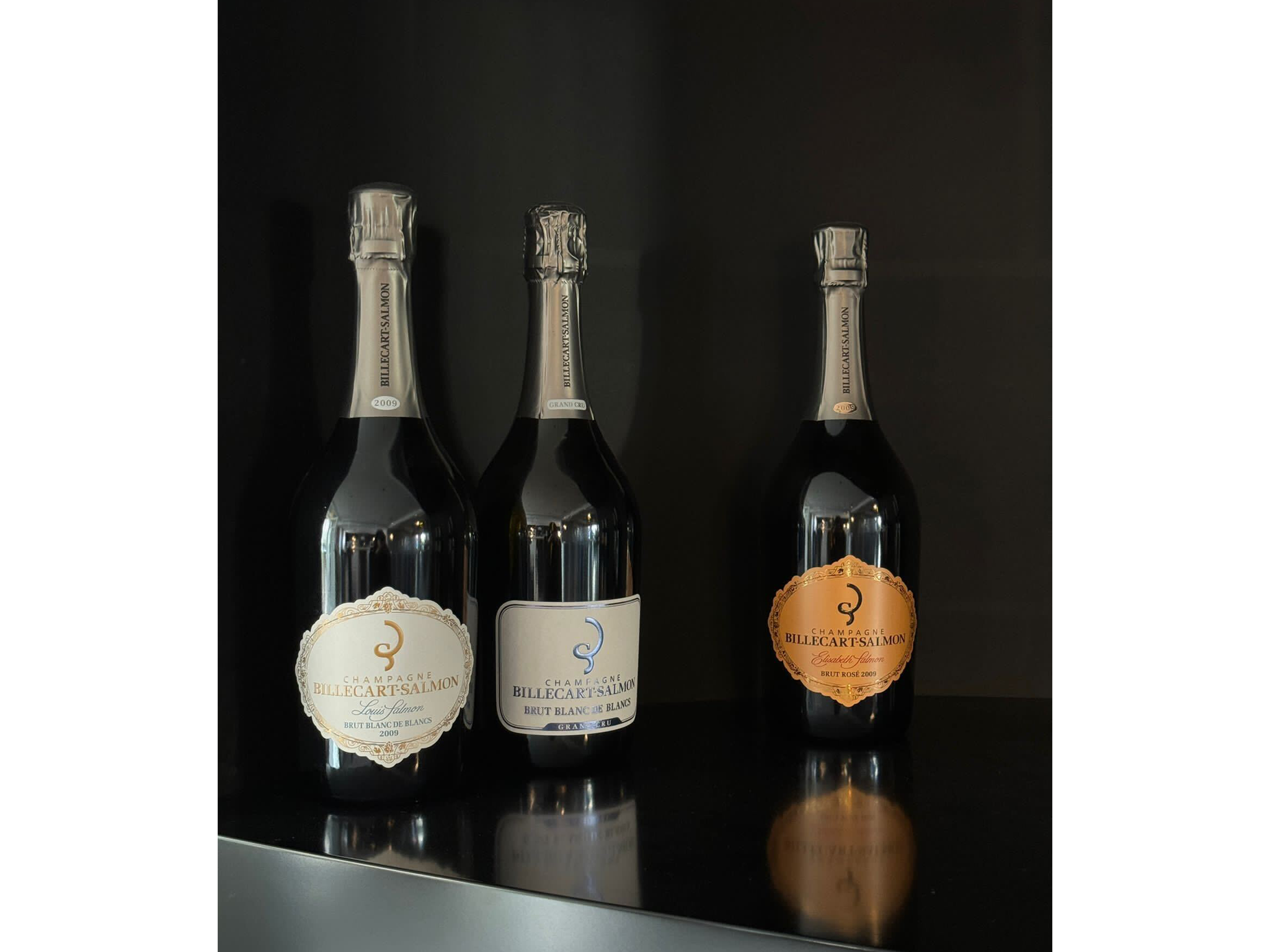Caving in: Exploring the cellars of Champagne’s Billecart-Salmon

[ad_1]
Like worms and London commuters, wine professionals spend a great deal of time underground. Some of the best moments of our careers are spent sniffing around dank cellars – creeping down stairs, Nosferatu-like, to withdraw carefully stowed bottles from dusty storage.
I’ve had the pleasure of visiting a few of the monolithic champagne houses, but I was particularly intrigued to visit the cellars of Billecart-Salmon winery in Mareuil-Sur-Aÿ, a 10-minute drive from the famed town of Épernay in France’s Champagne region. Not only is the winery one of the most easily recognised grandes marques internationally, most crucially, it also produces my go-to birthday wine.
Indeed, every 25 August starts (at 11am) with a chilled glass of Billecart-Salmon’s brut rosé, enjoyed while I’m still in bed. To me, the sensation of drinking this rosé has always been akin to placing a wild strawberry in my mouth – stalk and all. The earthy, vegetal umami of the stalk, paired with the racy but fleshy fruit… it’s enough to make you want to stay in bed for the whole day, enjoying glass after rapturous glass.
More than 200 years old, Billecart-Salmon remains one of the few major maisons to be both family-owned and -run. It now grows vines across 100 hectares, as well as collecting from trusted champagne growers. They say you should never meet your heroes, but I wanted to peek behind the curtain and see the wizard.
Bucking the trend
I find there’s a perception that everywhere in France (apart from Paris) is impossible to get to, so it is my pleasure to tell you that is not the case. There are hourly trains travelling to the country’s top wine regions from Paris’s various terminals, including Gare de l’Est, from which you can travel to Épernay – the epicentre of champagne production.

This is one of the few major maisons to be both family-owned and -run
(Hannah Crosbie)
While just a short drive from Épernay, Billecart-Salmon feels worlds away from the clout-heavy length of Avenue de Champagne (a stretch of road that hosts the offices of most of the grandes marques). On first glance, Mareuil-Sur-Aÿ seems to be a sleepy French village, its buildings covered in white plaster, until you realise most of those buildings are owned by Billecart-Salmon.
What may have seemed like a humble barn is revealed to be the winery. What may appear to be a family home is, in fact, a guesthouse. I’m told many of the renowned champagne houses choose to move to Épernay once they make it big but it seems Billecart-Salmon didn’t follow suit.
Perhaps that decision was made, in part, so as to be closer to the jewel in Billecart-Salmon’s crown: Clos Saint Hilaire – a single plot under lock and key; an oasis in rural Champagne. Enclosed in white stone walls, Clos Saint Hilaire is a short walk from the winery, and used to be used to make red wine for the cuvée Elisabeth Salmon, until it was decided to use the 60-year-old plot as a single vineyard in its own right in 1995.
On the evening I arrived, seventh-generation owner Mathieu Roland-Billecart stood surveying the plot, which is capable of producing only 3,500 to 5,500 bottles. It is intriguing how much he, and the rest of the winery’s committee, seemingly values this small parcel of land, but Mathieu takes special care to emphasise the provenance of the rest of the grapes: Côte des Blancs for chardonnay; Montagne de Reims for pinot noir, and the Vallée de la Marne for pinot meunier.
From vine to bottle

Some wines continue to be vinified in second- or third-use oak barrels
(Hannah Crosbie)
Leaving the vineyards and heading to the winery, each parcel is vinified separately (so the winemaker is able to trace the origin of the grape when blending) and fermented at a low temperature, not exceeding 13C – which is at the very lower end of acceptable temperatures when fermenting white wine. A cold fermentation in stainless steel ensures a slower process, as well as the preservation of the character of the high-quality fruit. Some of the wine continues to age in stainless steel to maintain these natural aromatics, but some continues its journey in older oak.
In the maison’s remarkable chais (wine storerooms) some wine continues to be vinified in second- or third-use oak barrels (still in individual parcels). The journey of each plot and parcel is documented in meticulous French cursive on a series of blackboards around the winery.
Then, to the cellars, where the wines of Billecart-Salmon age on lees (the dead yeast cells from fermentation) for years – a process that gives champagne a certain biscuity, brioche character. Venturing underground, I spied countless bottles resting in riddling racks around me. Above, a masonic reminder that these cellars date back to the 17th century, while, illuminated in sodium-orange, a low tunnel stretched for a mile ahead.
A good age

Billecart-Salmon imparts elegance, body and moreish structure to all its wines
(Hannah Crosbie)
In the Champagne region (as well as many other wine regions), there is a ‘cahier des charges’ – a set of regulations that a winery must follow in order to put the word ‘champagne’ on its labels. Among the regulations is a minimum time for ageing on lees. For non-vintage wines, this is 12 months; for vintage, it’s three years, but Billecart-Salmon regularly exceeds these time periods on all counts. The winery’s entry-level brut réserve sees 30 months of lees-ageing, and vintage cuvées regularly see more than a decade.
So, what does this extra layer of complexity do for the wines? Well, I can’t help but notice their quality whenever I drink them, whether enjoying the 2008 cuvée Nicolas François with beef tartare at Le Bon Georges in Paris’s 9th arrondissement, or enlivening the palate with the brut réserve between courses at La Réserve off the Champs‑Elysées. Plus, the aforementioned brut rosé is just as divine with domestic fare as it is with fine dining. Sip it alongside olives or cured trout – just save me a drop for my next birthday.
Want more inspiration? Discover the best wine tour holidays around the world
[ad_2]
Source link

